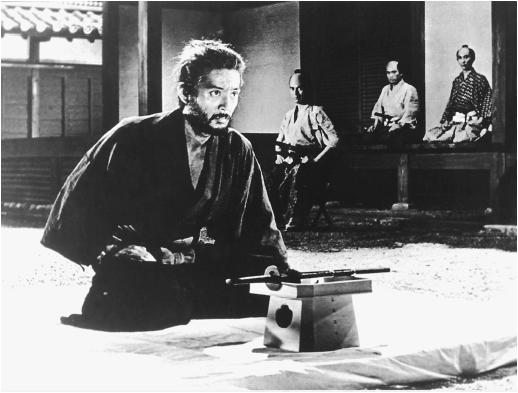Japanese cinema was introduced in the last decade of the 19th century. The first fifty years of the Japanese cinema was limited in silent and short movies. In the early 1950s and 1960s, Japanese cinema took its position in the international scene. In that period Many Japanese films had been produced.
“The seven Samurai “, " Rashmon" and " Vgtsu” are the most famous an d popular films at that time. The audience and the caritas admired them and they became international films.
d popular films at that time. The audience and the caritas admired them and they became international films.
Since that Japanese cinema has been admitted as unique national cinema has its own look and highly accomplished.
The golden age:
The Golden age of Japanese cinema was in the period extended from 1960s to 1970s. This era produced many of regarded movies such as “The ring” and “Godzella".These movies were remade by Hollywood and they won large number of audience from different countries.
Yasujro Ozu was an influential Japanese film director. He was born in Tokyo in December 12, 1903. He made about 53 films in his first five years as a director. Tokyo story is one of the most famous films directed by Ozu. It is one of the best films that ever made in Japan even in the world. After that in 1953 and 1954, author Japanese director called Mizognchi made two famous films. They are “Ugetsa " And " Sansho the bailiff ".
“The seven Samurai “, " Rashmon" and " Vgtsu” are the most famous an
 d popular films at that time. The audience and the caritas admired them and they became international films.
d popular films at that time. The audience and the caritas admired them and they became international films.Since that Japanese cinema has been admitted as unique national cinema has its own look and highly accomplished.
The golden age:
The Golden age of Japanese cinema was in the period extended from 1960s to 1970s. This era produced many of regarded movies such as “The ring” and “Godzella".These movies were remade by Hollywood and they won large number of audience from different countries.
Yasujro Ozu was an influential Japanese film director. He was born in Tokyo in December 12, 1903. He made about 53 films in his first five years as a director. Tokyo story is one of the most famous films directed by Ozu. It is one of the best films that ever made in Japan even in the world. After that in 1953 and 1954, author Japanese director called Mizognchi made two famous films. They are “Ugetsa " And " Sansho the bailiff ".
Nowadays Japanese cinema is widely spread and popular. However, there are many of good Japanese cinema products are unknown in the world because most people are only looking for Hollywood products. Most of them do not try to watch the Japanese movies.
The silent era:
Louis Leprico In 1888 created the first film in the world. It was very short movie, only two seconds. "Roundhay garden scenes" as it called, was a film of people walking around in a garden. Before that In 1920s the art of motion pictures has developed in the silent era. The quality of the silent movies was not very high .Also the technology was very simple and was always made errors such as films being played back at wrong speed. But these were the first stones for today’s cinema

0 comments:
Post a Comment